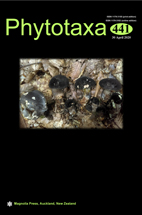Abstract
Phylogenetic analyses have revealed that the traditional order Prasiolales, which contains filamentous and pseudoparenchymatous genera Prasiola and Rosenvingiella with complex life cycle, also contains taxa of more simple morphology such as coccoids like Pseudochlorella and Edaphochlorella or rod-like organisms like Stichococcus and Pseudostichococcus (called Prasiola clade of the Trebouxiophyceae). Recent studies have shown a high biodiversity among these organisms and questioned the traditional generic and species concept. We studied 34 strains assigned as Stichococcus, Pseudostichococcus, Diplosphaera and Desmocococcus. Phylogenetic analyses using a multigene approach revealed that these strains belong to eight independent lineages within the Prasiola clade of the Trebouxiophyceae. For testing if these lineages represent genera, we studied the secondary structures of SSU and ITS rDNA sequences to find genetic synapomorphies. The secondary structure of the V9 region of SSU is diagnostic to support the proposal for separation of eight genera. The complex taxonomic history was summarized and revised. The ITS-2/CBC approach was used for species delimitation. Considering all these results, we revised the genera Stichococcus, Pseudostichococcus, Diplosphaera and Desmococcus and proposed four new genera and four new species for the science community. The usage of the V9 region and the ITS-2 barcodes discovered potential new species among the Stichococcus-like organisms in culture-independent studies.

